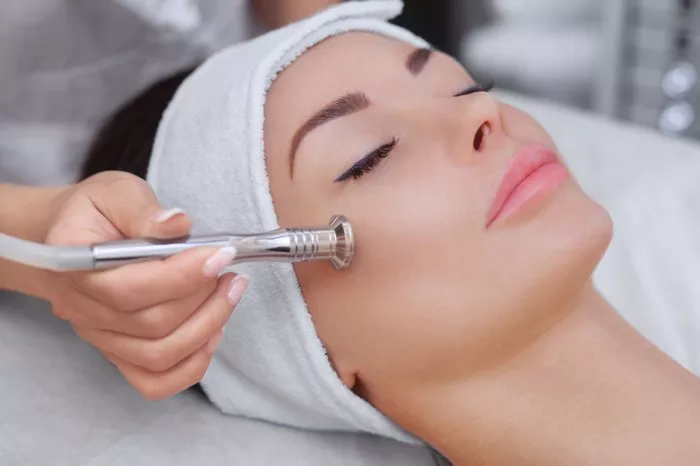Acne scars can be a persistent reminder of past breakouts, affecting both the appearance and confidence of individuals. Microdermabrasion is a popular non-invasive treatment option that can help improve the appearance of acne scars by gently exfoliating the skin and stimulating collagen production. If you are considering microdermabrasion for acne scars, you may be wondering how many treatment sessions are required to achieve the desired results. In this article, we will explore the treatment process and discuss the number of sessions typically recommended for addressing acne scars with microdermabrasion.
Understanding Microdermabrasion for Acne Scars
Microdermabrasion is a cosmetic procedure that uses a handheld device to exfoliate the outermost layer of the skin, revealing a smoother and more even complexion. The treatment can help minimize the appearance of acne scars by removing the damaged skin cells and promoting the growth of new, healthier skin cells.
During the procedure, the microdermabrasion device gently sands the skin using fine crystals or a diamond-tipped wand, while simultaneously suctioning away the exfoliated skin cells and debris. The exfoliation process helps to smooth out the skin’s texture, reduce the depth of acne scars, and stimulate collagen production, which can improve the overall appearance of the skin.
Number of Microdermabrasion Sessions for Acne Scars
The number of microdermabrasion sessions required to address acne scars can vary depending on several factors, including the severity of the scars, the individual’s skin type, and their specific treatment goals. In most cases, a series of multiple sessions is recommended to achieve noticeable improvement.
On average, individuals may need between six to twelve sessions of microdermabrasion spaced approximately two to four weeks apart for optimal results. This time frame allows the skin to heal and regenerate between sessions while gradually addressing the acne scars.
It is important to note that each person’s response to microdermabrasion can vary, and some individuals may require more or fewer sessions to achieve their desired outcome. During the initial consultation, a skincare professional will assess your specific needs and develop a personalized treatment plan tailored to your skin condition and goals.
Benefits and Limitations of Microdermabrasion for Acne Scars
Microdermabrasion can offer several benefits for individuals with acne scars. These include:
- Improved Skin Texture: Microdermabrasion helps to smooth out the skin’s texture by removing the outer layer of damaged skin cells, reducing the appearance of acne scars and leaving behind a more even and refined skin surface.
- Stimulated Collagen Production: The exfoliation process of microdermabrasion stimulates collagen production, which can help improve the appearance of acne scars over time. Collagen helps to rebuild and strengthen the skin, resulting in a smoother and more youthful complexion.
- Non-Invasive and Minimal Downtime: Microdermabrasion is a non-invasive procedure that requires no anesthesia and has minimal downtime. It allows individuals to resume their daily activities immediately after the treatment, making it a convenient option for individuals with busy lifestyles.
- Suitable for Various Skin Types: Microdermabrasion is generally safe and suitable for most skin types, including sensitive skin. However, it is essential to consult with a skincare professional to determine if microdermabrasion is the appropriate treatment option for your specific skin condition.
While microdermabrasion can provide noticeable improvement in the appearance of acne scars, it is important to understand its limitations. Microdermabrasion is most effective for mild to moderate acne scars. Deep or severe acne scars may require more advanced treatments, such as fractional laser resurfacing or chemical peels, to achieve optimal results.
Aftercare and Maintenance
After each microdermabrasion session, it is crucial to follow the skincare professional’s aftercare instructions to ensure proper healing and maximize the results. These instructions may include:
- Avoiding Sun Exposure: Protect your skin from direct sun exposure by wearing sunscreen with a high SPF and using protective clothing, hats, or sunglasses.
- Moisturizing: Keep your skin well-hydrated by applying a gentle moisturizer as recommended by your skincare professional.
- Avoiding Harsh Skincare Products: Refrain from using harsh or abrasive skincare products, such as scrubs or exfoliants, immediately after microdermabrasion. Stick to gentle and non-irritating products.
- Avoiding Picking or Scratching: Refrain from picking, scratching, or excessively touching the treated area to prevent infection and irritation.
- Maintaining a Consistent Skincare Routine: Follow a regular skincare routine that includes cleansing, moisturizing, and sun protection to support the healing process and maintain the results of microdermabrasion.
Consultation with a Skincare Professional
If you are considering microdermabrasion for acne scars, it is essential to consult with a qualified skincare professional or dermatologist. They will assess your skin condition, evaluate the severity of your acne scars, and recommend the appropriate number of treatment sessions based on your individual needs and goals.
In conclusion, microdermabrasion can be an effective treatment option for improving the appearance of acne scars. The number of sessions required will depend on the severity of the scars and individual factors. By following the recommended treatment plan and adhering to proper aftercare, you can achieve noticeable improvement in the texture and overall appearance of your skin. Consult with a skincare professional to determine if microdermabrasion is the right choice for your acne scars and embark on your journey toward smoother, more confident skin.

